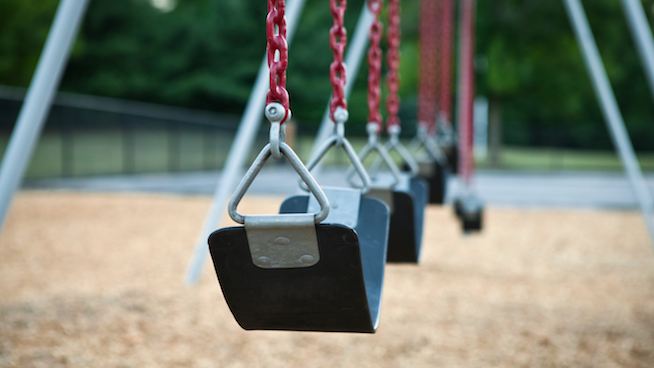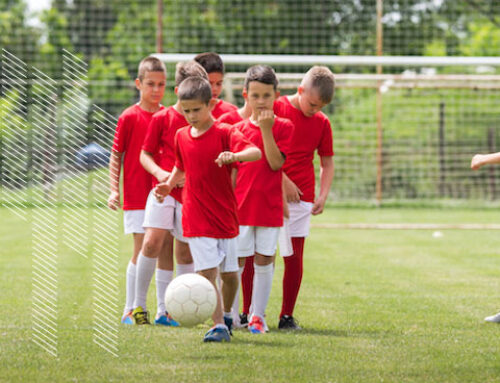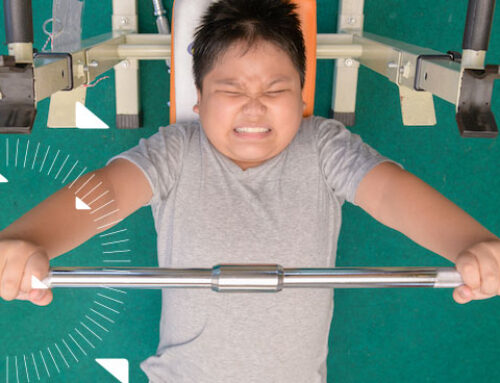By Brandon Hall
In our last piece from our interview with play expert Dr. Peter Gray, we outlined the five criteria of play. For an activity to truly be considered play, it must:
- Be self-chosen and self-directed
- Be done for its own sake and not an outside reward
- Have some sort of rules/structure
- Have an element of imagination
- Be conducted in an alert frame of mind
When you break it down like that, much of what modern parents think of as play doesn’t actually qualify. The truth is play has been gradually declining for the past five or six decades, but it seems to have come to a head in the last 10 years. According to the Child Mind Institute, American kids now spend an average of just 4-7 minutes a day on unstructured outdoor play, and elementary schools across the country are reducing or entirely eliminating recess. Play is an absolutely critical part of our youth, as it develops life skills in a way which is very hard to replicate elsewhere. How did this crucial component of the human experience get so diminished?

The 1950s were something of a “golden era” of play. The post-World War II baby boom left no shortage of potential playmates for a kid, and child labor laws passed in the late 1930s meant children could no longer be forced to toil inside factories or coal mines. Schools had multiple recesses throughout the day, the concept of homework barely existed, and the school year itself was about 4-5 weeks shorter.
“School was not the big deal it is today. Parents were not involved. You went home, you were home. School happened at school, when you were out of school, you were out of school,” says Gray, a research professor of psychology at Boston College and the author of the book Free to Learn: Why Unleashing the Instinct to Play Will Make Our Children Happier, More Self-Reliant, and Better Students for Life. The culmination of these factors created a generation where kids played for hours each and every day.
“You could go out anytime during daylight and you’d find kids playing with no adults around. Parents shoo’d you outdoors, they didn’t want you in the house—moms especially,” Gray says. Organized youth sports were still in their infancy, and if they did occur, they were a far cry from some of the ultra-expensive, ultra-regimented leagues that exist now. In some little leagues, the biggest or most mature kid on the team often acted as the coach, and there was rarely a parent to be found down the foul lines. But this golden age of play didn’t last forever.
The rise of television made the indoors more attractive, sure, but it was the shift in parental attitudes around school, sports and free time that really changed things. Elementary schools (and schools, in general) began placing a greater emphasis on testing results and homework. According to the University of Michigan, students aged 6-8 went from having 52 minutes of homework a week in 1981 to 128 minutes a week in 1997.
Sensationalistic news reports led parents to believe the world was becoming increasingly dangerous for their children, though statistics show the opposite was in fact true. As time has gone on, the outdoor world’s only become safer for our children. Either way, parents became increasingly uncomfortable with the idea of their child playing around town without adult supervision, and organized sports slowly came to replace play. As the demand for organized activities for younger and younger ages increased, organizations quickly met the demand. Parents stopped allowing their kids to walk or bike to practice, instead shuttling them there themselves.
“Kids going to games themselves by bike or walking became somehow dangerous. So parents felt the need to drive them there. Then if you’re going to drive them there, you might as well watch. Then it became a sort of parental duty to stay and watch. If you don’t stay and watch you don’t care about your child. So you’re supposed to be there, you’re supposed to be cheering your child on. You’re supposed to care if your child’s team wins or loses,” Gray says. “It was gradual, it happened over time. (Organized sports) came to replace actual play in people’s minds—this is how my child gets exercise, this is how my child meets other children, and so on.”
The undercurrent among all this was the idea that play was largely a waste of time. Adults believed structured, adult-guided activities were of greater value to their children, so they began filling their free time as such. As the commitments mounted, time for play decreased. “Instead of the idea that childhood was an idea of freedom and play and children were largely free of adults, we began feeling increasingly responsible for the children’s development,” Gray says. “And accompanying that idea was that children’s own activities are a waste of time.”
Of course, we now know that couldn’t be further from the truth. A 2018 report from the American Academy of Pediatrics confirms that play enhances creativity, imagination, dexterity, boldness, teamwork skills, stress-management skills, confidence, conflict resolution skills, decision-making skills, problem-solving skills and learning behavior. Play is an essential part of the human experience, and a lack of play can have troubling short and long-term ramifications for children.
A major benefit of play is what’s known as “risky play.” This entails engaging in play that creates some sense of fear. This often involves ascending to great heights (climbing a pine tree), moving at great speeds (riding a bike or swinging on a rope swing), play fighting (wrestling), going off on your own (hide and seek) or engaging with dangerous tools/environments. Risky play is a fundamental part of play. Children like to test their limits and innately know how much fear they can tolerate, and when they engage with fear and survive the experience, they become more resilient, confident and better-equipped to handle stress and anxiety. While play in general has decreased over the last five or six decades, risky play has been hit particularly hard due to overprotective parents. Playgrounds have become increasingly sterile in America—most are now devoid of equipment that allows you to confront any fear of heights or high speeds, and offer little challenge in the way of dexterity or agility.

“Natural selection has designed children to play in risky ways so they learn how to deal with risk…I can do this thing that stretches my physical and emotional abilities and I can survive it, I can do it. What you’re practicing is controlling your mind and body in a somewhat fear-inducing situation. But it’s a fear-inducing situation that you can control, you put yourself there. But what you’re learning is you can deal with feeling fear, you can hold yourself together. So when you experience something that produces fear in real life, it’s not a new thing to you,” Gray says. “I feel confident I can handle this instead of panicking. I think that’s part of the reason we’re finding a lot of lack of resiliency today, we’re finding a lot of people falling apart when something difficult happens in their life. Because they haven’t practiced this kind of play where they’re deliberately putting themselves into difficult positions and learning how to deal with that.”
Gray notes that continually decreasing levels of play have coincided with increases in depression and anxiety among young people. In a 2014 TEDx Talk, he outlined how five to eight times as many children now suffer from major depression or a clinically significant anxiety disorder as compared to the 1950s. Questionnaires have also revealed a continuous decline among children and young adults in the feeling that they have “control over their own lives.” They’re increasingly micro-managed and have limited chance to cut loose or follow their intuitions. It’s not an exaggeration to say a lack of play may be at the heart of increased anxiety and decreased resiliency in young people. It’s not their fault—they’re simply ill-equipped to handles life’s ups-and-downs.
“The use of mental health services on campuses is skyrocketing, students are coming to college unprepared for dealing with the bumps in the road of life,” Gray says. “They have all too often emotional breakdowns about getting a bad grade or having an argument with their roommate or being so-called ‘bullied’ by somebody. Things that in the past, the expectation and the reality was to largely deal with these things themselves, they had the coping skills to know how. Today—I don’t want to say no one does, but an increasing percentage of students don’t have the skills to deal with these bumps in the road of life.”
How can we put play back in our children’s lives? We’ll get to integrating more “true” play in a second, but you can start by shifting certain organized activities into more playful states. Are there ways to help them self-select and self-direct more of what they’re doing? Or decrease the focus on outside rewards? Or foster a grander sense of imagination? The more an adult is telling them exactly what and how to do something, the less play is taking place. The U.S. Soccer pamphlet Best Practices for Coaching Soccer in the United States sums it up nicely: “Coaches can often be more helpful to a young player’s development by organizing less, saying less and allowing the players to do more. Set up a game and let the kids play. Keep most of your comments for before and after practice and during water breaks.”
In terms of pure or “true” play, we’re not getting back to the days of the 1950s anytime soon. However, some communities are fighting to bring play back with encouraging results.
Schools around the country are integrating “play clubs” and finding great success. These clubs typically take place on school grounds for 1-2 hours directly preceding or directly following the school day. Different equipment is set out for kids to play and experiment with at their leisure, and adult supervisors (of which there are not an abundance) are trained only to intervene when something truly dangerous is occurring. Gray recently observed an elementary school play club that takes place prior to the school day once a week (though they’re trying to make it more frequent) and was delighted with the result.
“Free play indoors in the school and outdoors, it’s age mixed, all grades K-5…It’s working wonderfully. It’s working partially because the age mixing. Older children are helping to solve the quarrels among younger children,” Gray says. “Children are truly running in hallways, wrestling, playing chasing games, some old-fashioned games, very vigorous play. Here’s a situation where there are adults present, but the adults are initiating actives (and) they’re not intervening. I was there for an hour, there were 150 kids, and I did not see any single case of adult intervening. It went so remarkably well.”
Gray also offers up the idea of recreation departments including more sandlot-style activities among the more organized sports. It would be formalized in the sense it would take place at a given location at a given time, but it would really be just a way to get a bunch of kids together. A volunteer could help get games going during the first few sessions, but slowly step away and intervene less over time. New equipment could be added over time to help inspire different games or different styles of play.
“Maybe one parent is there at a time to help each other put their minds at ease. It begins with something more formal, but over time, that structure falls away,” Gray says. “I think that could catch on. I think there’s enough kids and enough parents who would want to do this as an alternative…Ideally, over time, the kids who are coming together (for this) every Saturday afternoon start realizing they can do it every other day, too.”
Photo Credit: Ridofranz/iStock, andresr/iStock, DavidMarkiewicz/iStock
READ MORE:







Leave A Comment
You must be logged in to post a comment.